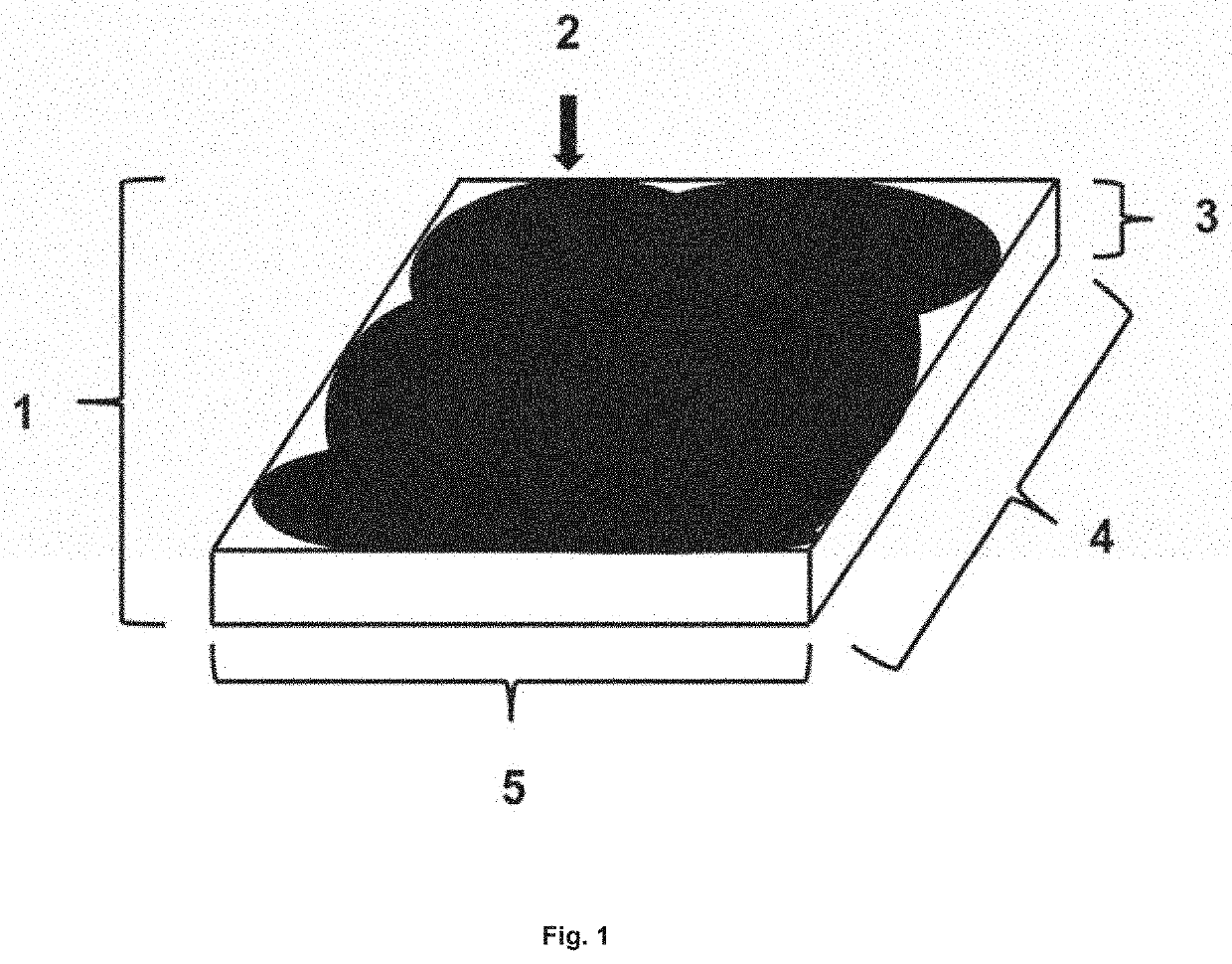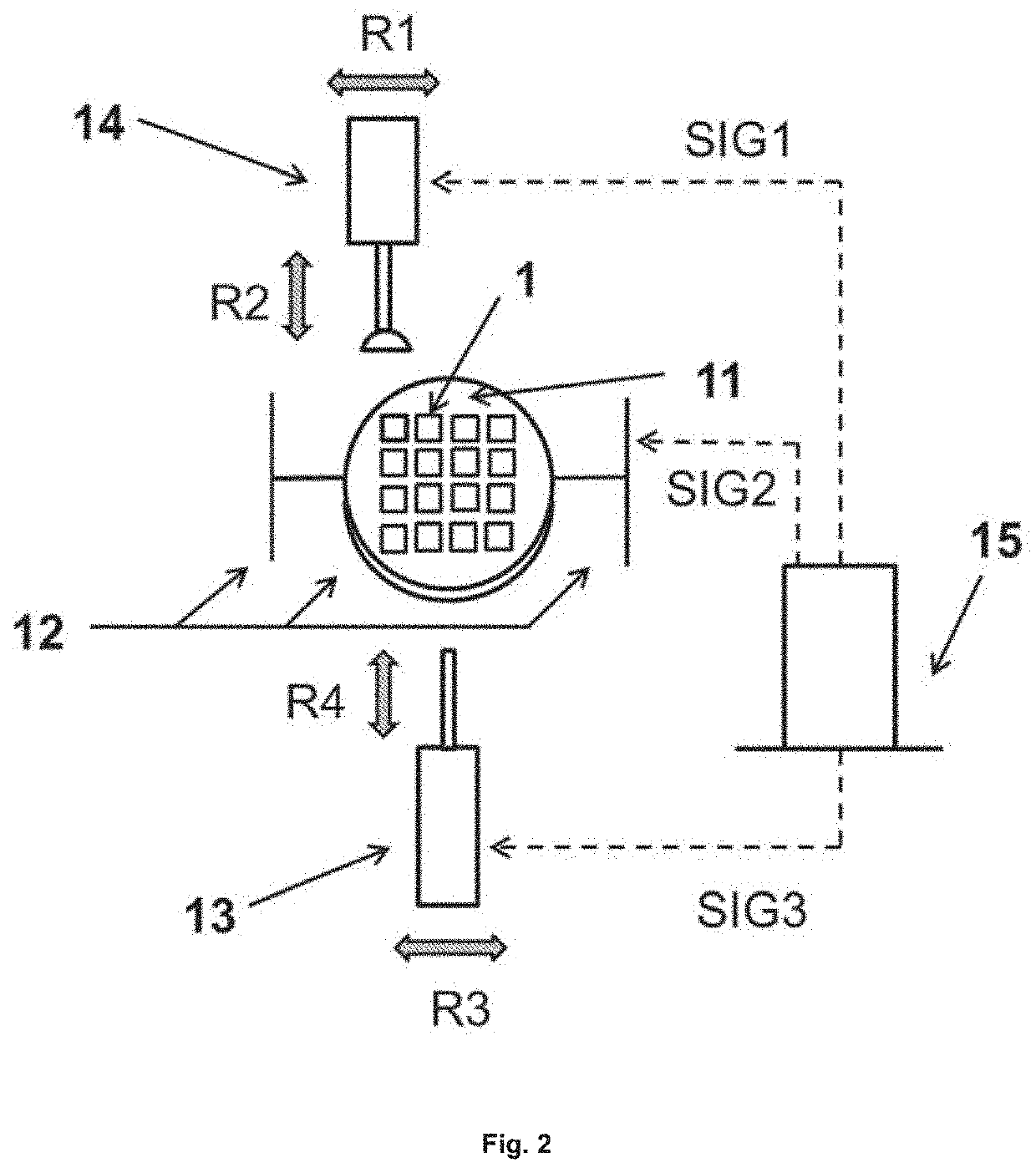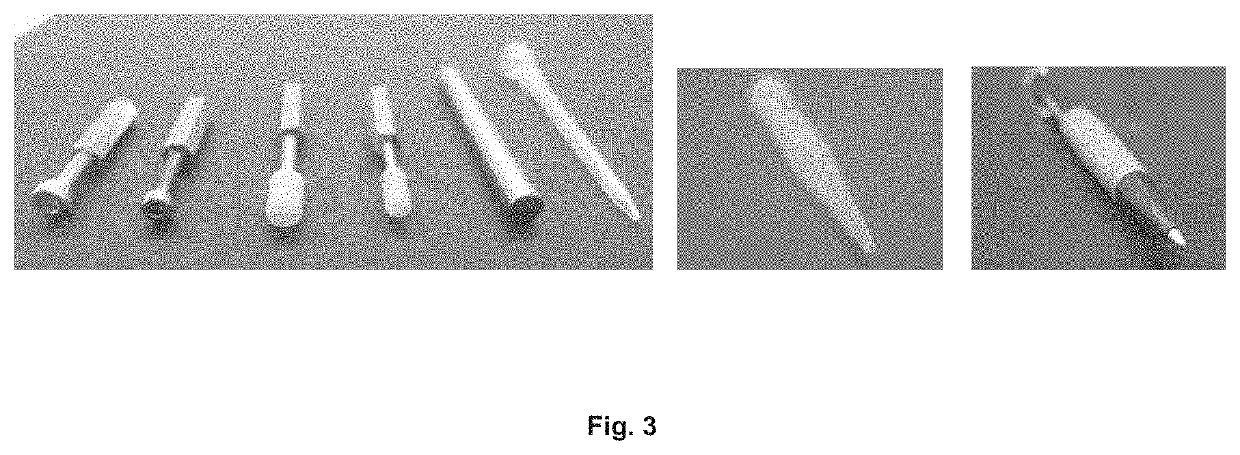Coated solid-phase fragments and production thereof
- Summary
- Abstract
- Description
- Claims
- Application Information
AI Technical Summary
Benefits of technology
Problems solved by technology
Method used
Image
Examples
example 1
r Producing a Biological Material-Coated Solid-Phase Fragment with the Aid of a Pre-Detachment Step
[0123]A solid-phase support sized 76×26×0.15 mm3 was fitted onto a film (Ultron Systems dicing tape 1009R) and fragmented. The selected lifting head, for example the head of a cylinder head screw (diameter 4.4 mm), was clamped in the vice as perpendicularly as possible. The film comprising the fragmented solid-phase support of the format 4.8×4.8×0.15 mm3 was guided by hand over the lifting head such that the lifting head was centred below an individual fragment. The film was placed by hand on the lifting head slowly and as horizontally as possible (FIG. 4A). By means of uniform pressing of the film onto the lifting head, a physical pressure was exerted on the targeted fragment. Said pressure was increased until the fragment detached from the adjacent fragments of the film (FIGS. 4B and C). The detachment became apparent through a brightening of the detached film surface. After this pro...
example 2
Various Lifting-Head Variants
[0125]In further series of experiments, the use of various lifting-head variants in the above-described method according to the invention was investigated. The lifting-head variants investigated were ballpoint pen refills, cylinder head screws, 3D printer heads, alignment pins and pipette tips (FIG. 3).
[0126]It was found that, in the case of the square format 5.0×5.0×0.15 mm3, the fragment was uniformly raised from the film above a certain diameter of the lifting head. Below this size of the lifting head, the fragment was detached from the film in a tilted manner and also had to be taken off from the film while tilted (e.g. by means of a suction cup).
[0127]The lifting heads used having a diameter of from 1.0 to 1.5 mm were capable of singularizing fragments on all tested formats from 2.5×2.5×0.15 mm3 to 5.0×20.0×0.15 mm3.
[0128]To reduce the rubbing of the lifting head on the film, especially in the case of elongated fragments, the use of, for example, ba...
example 3
n of Larger Solid-Phase Fragments Using the Method According to the Invention
[0129]The size of the maximally producible solid-phase fragments using the method according to the invention was compared with those produced using the method according to EP 1718948 B1 (FIG. 6). In both cases, the film Ultron Systems 1009R and a 0.15 mm thick solid-phase support were used.
[0130]Using the method according to EP 1718948 B1, maximum fragments of 3.2×3.2 mm2 edge length and accordingly a surface area of 10.24 mm2 could be produced in a reproducible manner. Using the method according to the invention, it was possible to produce fragments having an edge length of 25×5.0 mm2 and a surface area of 125 mm2. This corresponded to more than 12.2 times the maximum surface area of fragments produced according to the method of EP 1718948 B. The production of even larger fragments by means of the method according to the invention was not investigated.
[0131]The invention is described herein in a generic an...
PUM
 Login to View More
Login to View More Abstract
Description
Claims
Application Information
 Login to View More
Login to View More - R&D
- Intellectual Property
- Life Sciences
- Materials
- Tech Scout
- Unparalleled Data Quality
- Higher Quality Content
- 60% Fewer Hallucinations
Browse by: Latest US Patents, China's latest patents, Technical Efficacy Thesaurus, Application Domain, Technology Topic, Popular Technical Reports.
© 2025 PatSnap. All rights reserved.Legal|Privacy policy|Modern Slavery Act Transparency Statement|Sitemap|About US| Contact US: help@patsnap.com



